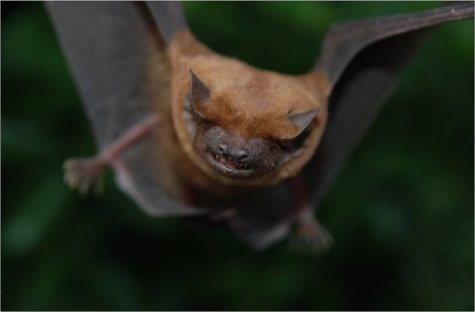Bat night on Saturday
On Saturday, August 24th, bats and their way of life will be presented at the Estonian Museum of Natural History in connection with the international bat night. A bat excursion takes place at dusk in the evening.
The Estonian Museum of Natural History is located in Tallinn’s Old Town, address Lai 29a. The Saturday Children’s workshop is open 17.30 to 21.30. An English lecture starts at 18.30, in Russian at 19.30, in Estonian at 20.30. The lectures will last an hour, and for participation an admission ticket to the museum must be paid. The bat night is arranged in cooperation with NPO Suurkõrv.
The bat excursion takes place on August 24th and starts at 21.30 in the courtyard of the Museum of Natural History, continuing to Snell’s Park.
Excursions also take place at Kadriorg on 25.08 (in English), and on 26.08 and 27.08 (in Estonian). The excursions last an hour and a half, the ticket price is 5 euros. Registration and more information:
Bats are presented by NPO Suurkõrv, nahkhiired.blogspot.com
Text and photos Triinu Tõrv
Translation: Liis
Common noctule Suurvidevlane Nyctalus noctula
The common noctule is the largest bat in Estonia. Its wing span can reach 40 centimetres, thus nearly half more than for instance the wing span of the Nathusius’s pipistrelle (Pipistrellus nathusii). This large bat also weighs correspondingly, up to 40 grams. Our other bats have weights clearly less than this.
The common noctule is pale brown with smooth fur, of the same colour on the back and under the belly. The face, ears and wing membranes are slightly darker. The ear tragus has a typical mushroom shape.
The noctules’ flight is fast, up to 50km/h, and straight-lined. The sudden downward swoops to catch insects are distinctive. It often flies high above tree stands, thus it is difficult to notice it. The noctule bat comes to hunt at stands of trees and water bodies. Breeding colonies of this species are usually in tree hollows, but sometimes noctules also use ventilation openings of panelled houses, and cracks under large road bridges as hiding places or for wintering.
Low and long-lasting echo location sounds are characteristic of the noctule bat. Human hearing range reaches 20 kHz. The sonar of some noctule bats extends to 18 kHZ, so children and adolescents with good hearing may hear the sonar of the noctule bat. To individuals with very sensitive hearing, listening to the sonar of a noctule bat at close range may even be painful. The noctule bat’s sonar should be audible on keeping the heterodyne bat detector at 20 kHz.
The noctule bat is a widely spread species in Estonia but certainly not very common. As a migrant species noctule bats are found in Estonia only in summer. For winter they migrate to Central and South Europe and may travel more than 1500 kilometres.









